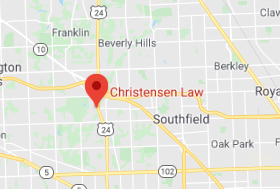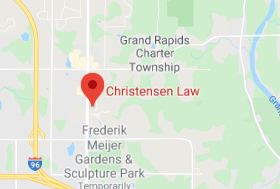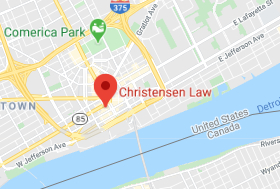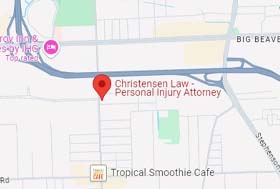
Christensen Law prevailed in the case of a young man denied compensation by his insurance company despite meeting all criteria of coverage. The insurance company attempted to block coverage, arguing the definition of household. Download the full case study here.
Mr. Barnes, 22, had been seriously injured by a hit and run driver in 2013. Over his many years of rehabilitation, he required shoulder surgery, two neck surgeries, two back surgeries, and endured years of pain management and therapy. The surgical and rehabilitation bills alone were over $625,000. As a young adult at the time of the accident, he lived and was domiciled with his grandparents in their home.
Michigan’s no-fault law required his insurance company to cover medical expenses for all relatives living in the grandparents’ household. The insurance company (CPIC) did not dispute that he lived in his grandparents’ two-story home. CPIC did not dispute that it was responsible to pay for the medical bills of any resident relative living in the household under their insurance policy and no-fault law. Accordingly, it would be reasonable to think CPIC would honor its promise to cover him, but that is not what happened. They denied Mr. Barnes’ claim by concocting a technical argument that he was not a household member because his bedroom was upstairs, which they argued was a “separate household” and therefore he was not covered – despite having accepted the premiums paid for his insurance.
The client’s Detroit home is a single-family home that has housed four generations of Barnes family members for over fifty years. Built-in 1928, the home is commonly referred to as a “five and five,” meaning the upstairs and downstairs levels mirror each other. There is only one address and a single entrance. The family can easily access both floors with no restrictions, which they commonly did. They ate meals together, watched television together, and interacted as families normally do.
Nonetheless, the insurance company argued that the architectural design meant the home was two separate households, and therefore Mr. Barnes was not covered by his grandparents’ policy. This news shattered Mr. Barnes and his family, as the cost of his medical treatment had approached $1,000,000. Christensen Law was retained and immediately began the fight to get his massive medical bills paid.
CPIC’s twisted and fictitious version of what comprises a family residence was rejected by a jury. When the insurance company appealed the verdict, the Court of Appeals also rejected their argument. The Court of Appeals, in their published opinion, agreed with Barnes.
This important case helps to clarify the law defining a family residence in the auto insurance arena and holds insurance companies accountable to their customers. Most importantly, the family will be relieved of the huge financial obligation CPIC tried to shift to them and will prevent similar ploys by auto insurers in the future.
————–
Opinion Excerpts:
“In our view, the key in this particular case is not the physical structure or design of the house, in and of itself, but rather the conduct and behaviors of the people living in the house in the context of that specific structure or design.”
“The trial court concluded that a genuine issue of material fact existed regarding whether the house encompassed one or two households. Black’s Law Dictionary (rev 4th ed), p 873, defines ‘household’ as: ‘a family living together . . . [t]hose who dwell under the same roof and compose a family.'”
“The jury was presented evidence that Barnes and his grandparents were living together as a family unit, i.e., that Barnes was domiciled in the same household as his grandparents. Accordingly, for the reasons discussed earlier, we hold that the trial court did not err by denying CPIC’s motion for a directed verdict.”






